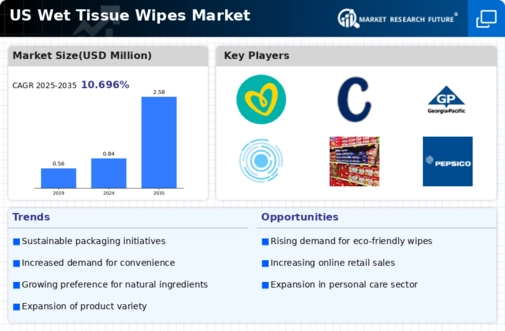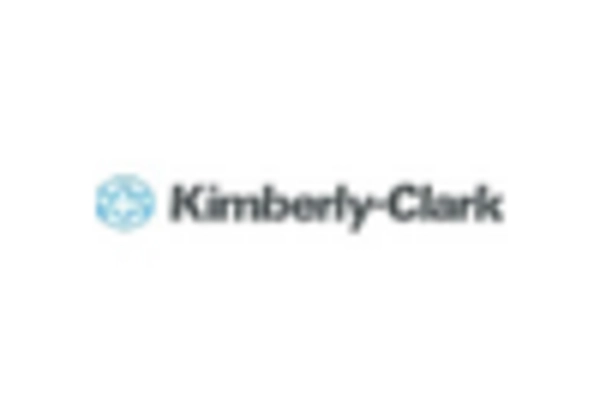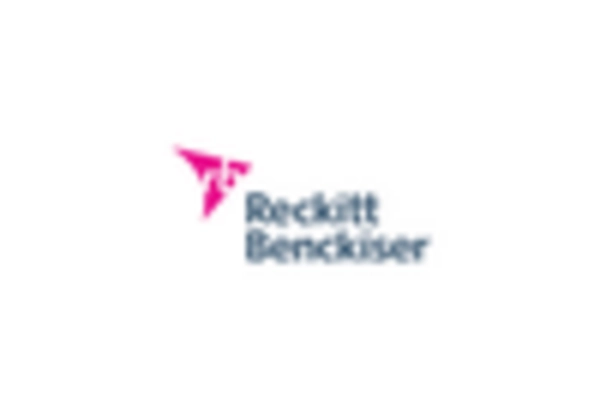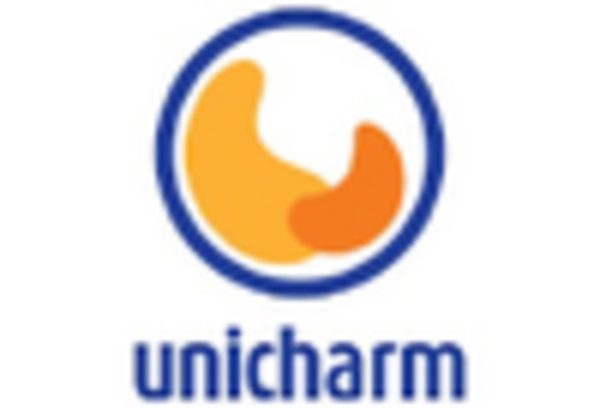Expansion of Retail Channels
The wet tissue-wipes market is witnessing an expansion of retail channels, which plays a crucial role in enhancing product accessibility. Traditional brick-and-mortar stores, alongside online platforms, are increasingly stocking a diverse range of wet tissue-wipe products. This trend is particularly relevant in the context of the growing e-commerce sector, where consumers can easily compare products and prices. Data suggests that online sales of hygiene products, including wet tissue wipes, have increased by 30% in the past year. The wet tissue-wipes market is thus benefiting from this multi-channel approach, allowing consumers to purchase products conveniently, which may lead to increased sales and brand loyalty.
Health and Hygiene Awareness
Heightened awareness regarding health and hygiene significantly influences the wet tissue-wipes market. Consumers are increasingly prioritizing cleanliness, particularly in public spaces and during travel. This shift is driven by a growing understanding of the importance of maintaining personal hygiene to prevent illness. The wet tissue-wipes market benefits from this trend, as products are often marketed as essential tools for maintaining cleanliness. Recent surveys indicate that approximately 70% of consumers consider hygiene products a necessity, further driving demand. As a result, manufacturers are likely to innovate and expand their product lines to include antibacterial and antiviral wipes, aligning with consumer preferences for health-oriented solutions.
Innovative Packaging Solutions
Innovative packaging solutions are emerging as a key driver in the wet tissue-wipes market. Manufacturers are increasingly focusing on developing packaging that enhances product usability and sustainability. For instance, resealable packaging options are gaining popularity, as they help maintain moisture and prevent drying out. Additionally, eco-friendly packaging materials are being adopted to appeal to environmentally conscious consumers. The wet tissue-wipes market is likely to see a shift towards biodegradable and recyclable packaging, aligning with consumer preferences for sustainable products. This innovation not only meets consumer demands but also positions brands favorably in a competitive market, potentially leading to increased market share.
Influence of Demographic Trends
Demographic trends significantly impact the wet tissue-wipes market, particularly the preferences of younger consumers. Millennials and Generation Z are increasingly driving demand for personal care and hygiene products, often favoring convenience and portability. This demographic is more likely to purchase wet tissue wipes for various applications, including skincare and household cleaning. The wet tissue-wipes market is adapting to these preferences by introducing products that cater to the specific needs of younger consumers, such as wipes infused with natural ingredients. As this demographic continues to grow, their influence on purchasing decisions is expected to shape product development and marketing strategies within the industry.
Rising Consumer Demand for Convenience
The wet tissue-wipes market experiences a notable surge in consumer demand for convenience-driven products. As lifestyles become increasingly fast-paced, consumers seek products that offer quick and efficient solutions for personal hygiene and cleaning. This trend is particularly pronounced among busy families and professionals who prioritize time-saving options. According to recent data, the market is projected to grow at a CAGR of 5.2% over the next five years, indicating a robust appetite for convenient hygiene solutions. The wet tissue-wipes market is thus positioned to capitalize on this demand, with manufacturers focusing on developing products that cater to on-the-go lifestyles, such as travel-sized wipes and multi-purpose cleaning solutions.

















Leave a Comment